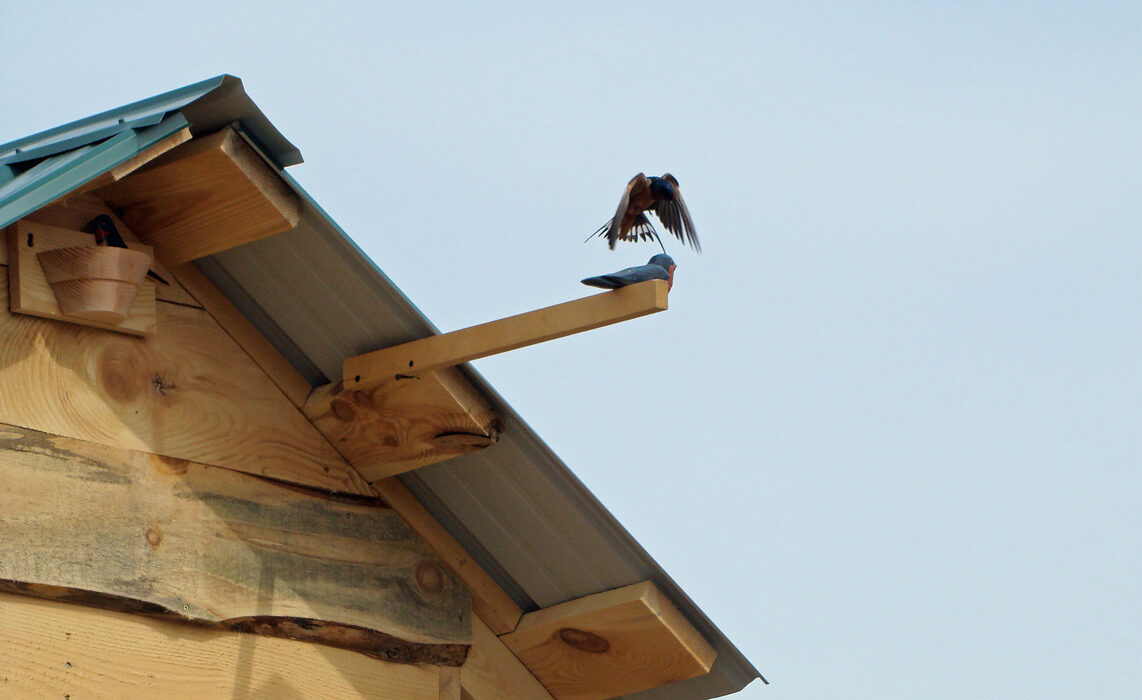
Project description
Background: The Barn Swallow is a small migratory songbird listed as threatened in Ontario under the Endangered Species Act and assessed as threatened in Canada by the Committee on the Status of Endangered Wildlife in Canada (COSEWIC). Although still common in many rural areas, the best available estimates suggest the Barn Swallow population declined by 80% in Canada and 66% in Ontario between 1970 and 2012¹. Barn Swallows typically nest on human-built structures such as barns, bridges, and sheds. To mitigate the loss of nesting habitat, for example when an old barn housing a nesting colony is demolished, structures are being built specifically for the species to use for nesting. Unfortunately, it appears that these new structures are rarely used by Barn Swallows.
Project work: We hypothesized that Barn Swallows would be more likely to colonize a new nesting structure if social cues were introduced to make it appear as though the new structure was already being used by nesting Barn Swallows. The social cues most likely to encourage nesting by these birds are Barn Swallow decoys and vocalizations. To evaluate the effect of social cues, we designed a paired experiment to compare nesting and behaviour at structures with and without social cues. Each property chosen for this experiment had recently lost Barn Swallow nesting habitat because a barn was demolished or the habitat became unavailable to the birds for another reason. The new structures provided replacement nesting habitat. We installed wooden decoys and broadcasted Barn Swallow songs and calls from one of the structures at each site; then we monitored nesting and behaviour at both structures throughout the nesting season.
Results: We conducted this research on two properties in 2014 and eight properties in 2015. Barn Swallows nested in seven of the 20 new structures. There were six nests on three structures with social cues and five nests on four structures without cues. All of the nests that we observed with eggs successfully fledged young. Although the social cues did not increase nesting in the new structures, we did see an impact on the behaviour of the birds. We found that Barn Swallows came closer to the new nesting structures and more birds interacted with the structures during broadcasts of the vocal social cues compared to times when vocalizations were not being broadcasted.
2016 follow-up: The increased visits to structures that we observed in our 2014-2015 work suggested that introducing social cues may increase nesting in future years. We conducted a follow-up experiment in 2016 to more closely investigate how Barn Swallows respond to the vocal social cues in the short term and to assess if more Barn Swallows nested in the new structures the following breeding season. Again in 2016, we found that Barn Swallow behaviour suggested a response to the vocalizations; however, this did not lead to an increase in nesting. Additionally, the post-breeding vocalizations broadcasted at eight study sites in 2015 did not result in more nests built in 2016.
Conservation implications: Although our experiment indicates that Barn Swallows show a behavioural response to broadcasts of their vocalizations at new structures, few Barn Swallows nested in these structures even when social cues were introduced. Relying on these types of structures to mitigate habitat loss may not be an effective conservation strategy and using conspecific social cues does not appear to improve this strategy. Preserving aging barns that can provide nesting habitat for many Barn Swallows for decades may be a more effective way of maintaining nesting habitat across broad geographic regions. Building new nesting structures may be useful for creating new Barn Swallow nesting habitat in appropriate locations where no structure existed previously.
Species status update: In 2017, Barn Swallow was added to the list of threatened species protected under Canada’s Species at Risk Act.
¹ Heagy, A., D. Badzinski, D. Bradley, M. Falconer, J. McCracken, R. A. Reid, and K. Richardson. 2014. Recovery Strategy for the Barn Swallow (Hirundo rustica) in Ontario. Ontario Recovery Strategy Series. Prepared for the Ontario Ministry of Natural Resources and Forestry, Peterborough, Canada.
Project details
The social cues research project was a collaboration between BECO and Bird Studies Canada.
We conducted this experiment at two sites in Norfolk County in 2014 and eight sites across southern Ontario in 2015. We conducted a follow-up study at three of these sites in 2016.
Assistance for this project was provided by the Government of Ontario, TD Friends of the Environment Foundation, The City of Waterloo, a CICan Clean Tech Internship, the Government of Canada’s Canada Summer Jobs program, and individual donors.
Read more about this project in the 2015 winter issue of Edible Toronto.
Building new structures
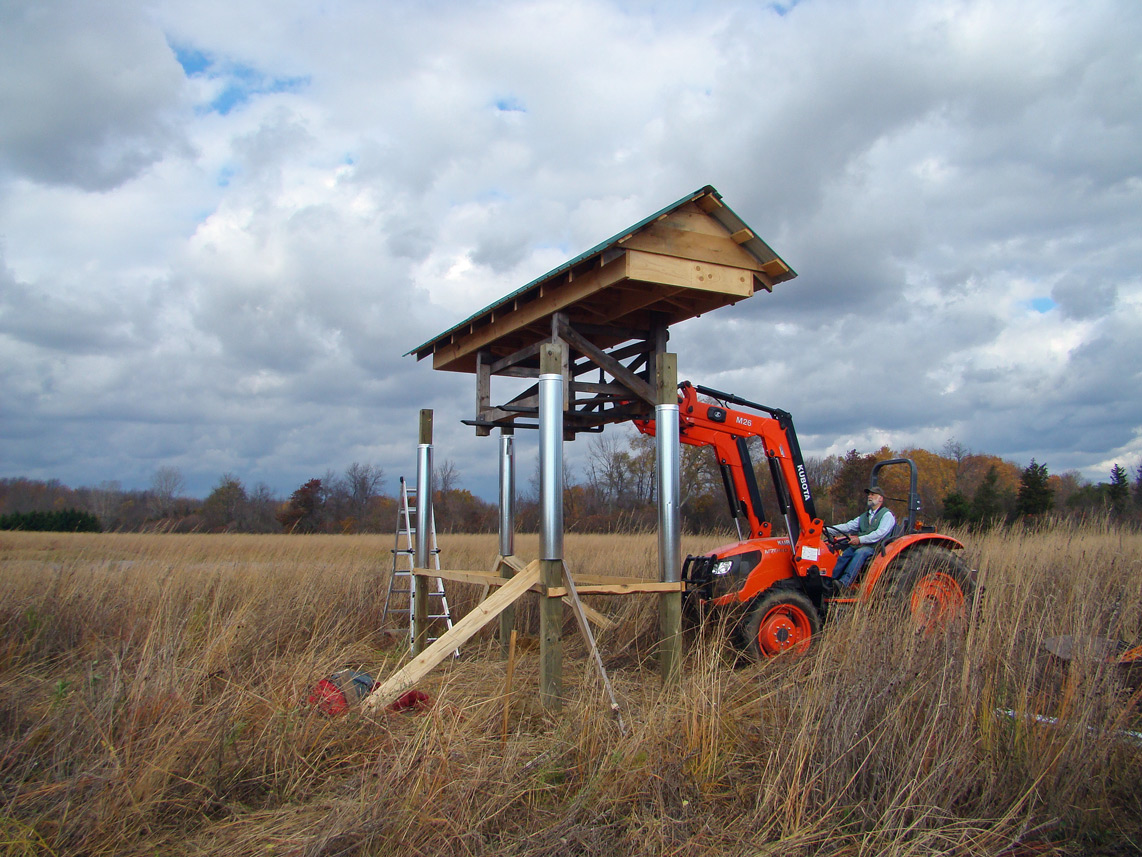
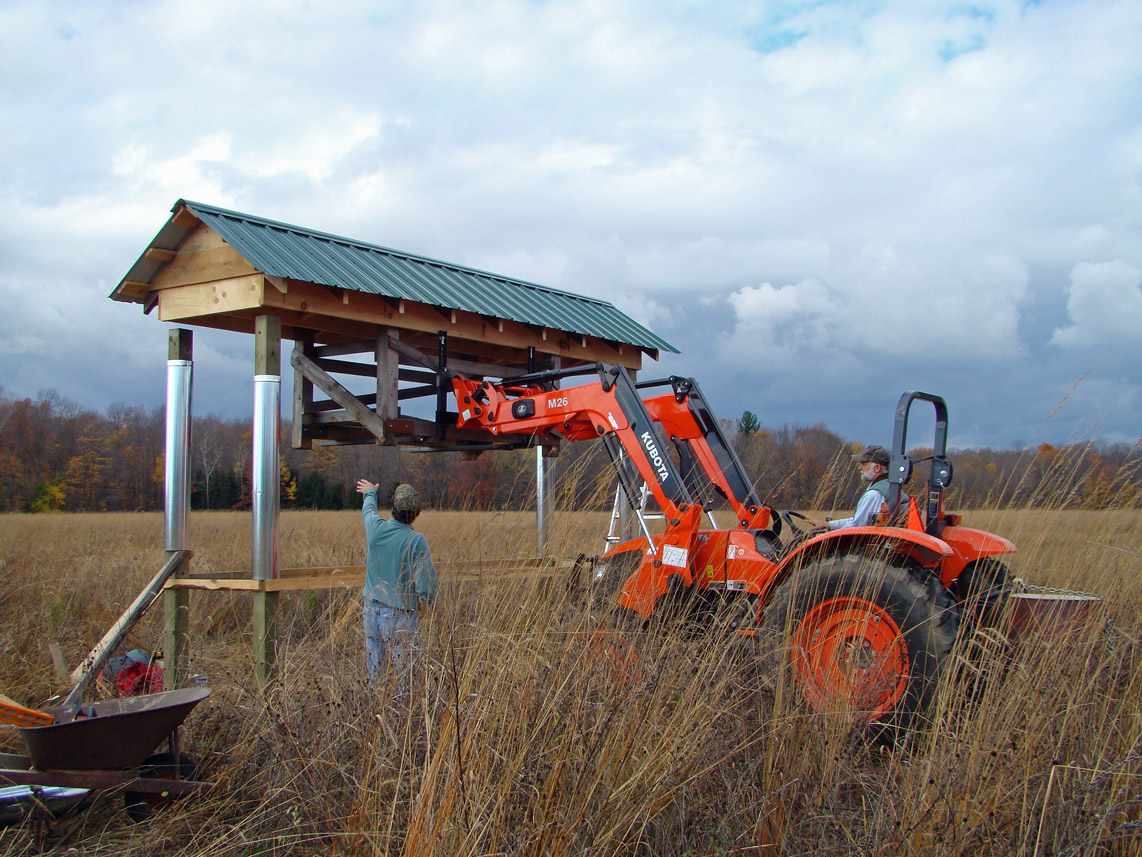
Jeff Sauder, a local builder in Norfolk County, led structure construction and produced nest cups for the experiment. He can be reached at [email protected] or 519.586.3065.
Social cues
We used wooden Barn Swallow decoys and a broadcast of Barn Swallow songs and calls as social cues for this experiment. The home-made audio unit was equipped with a timer and set to play a 30-minute audio track 8 times per day for the duration of the nesting season. The new nesting structures were also equipped with perches, predator guards to protect nests from mammalian predators, and wooden nest cups and supports to facilitate nest building.

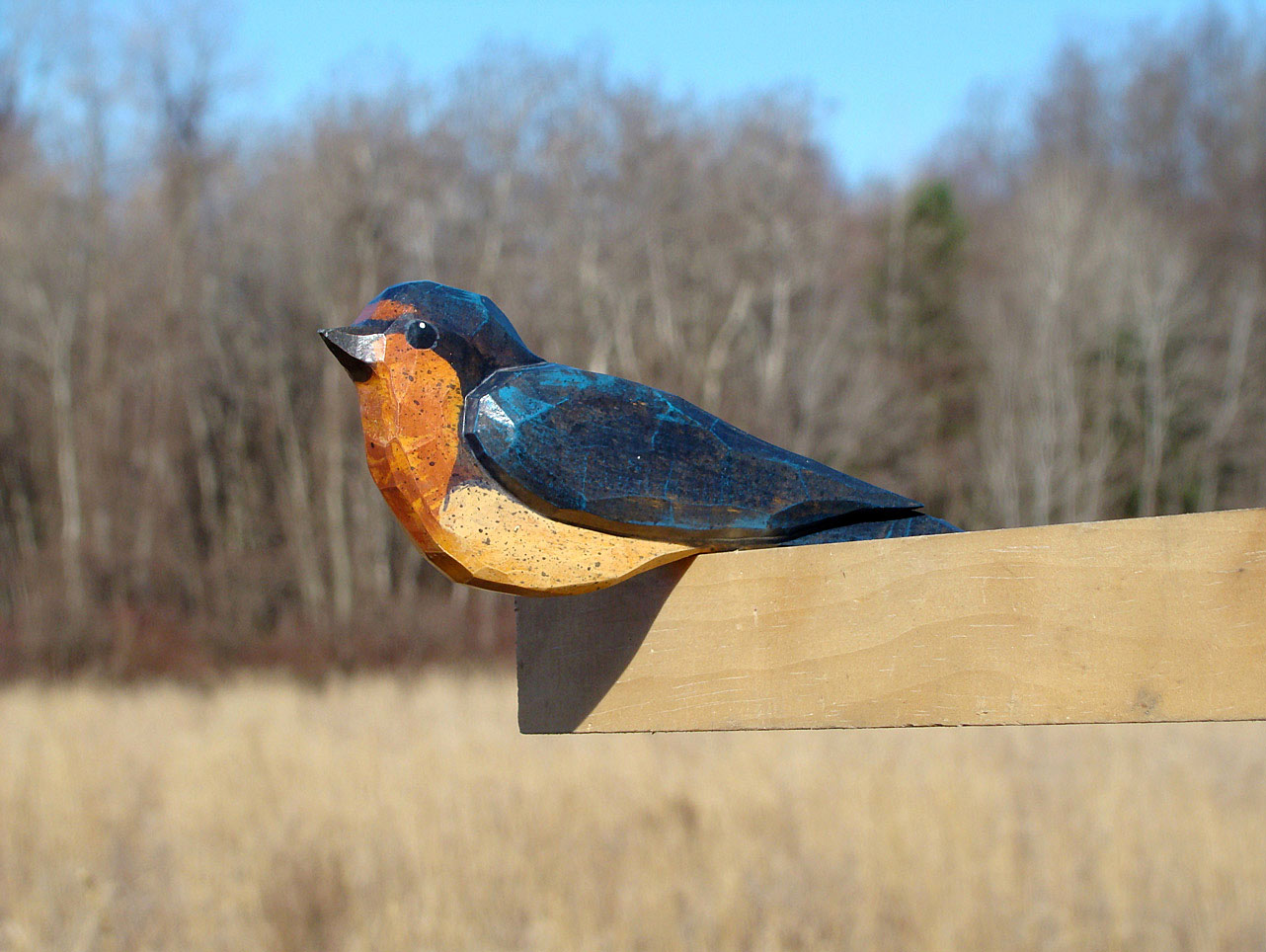

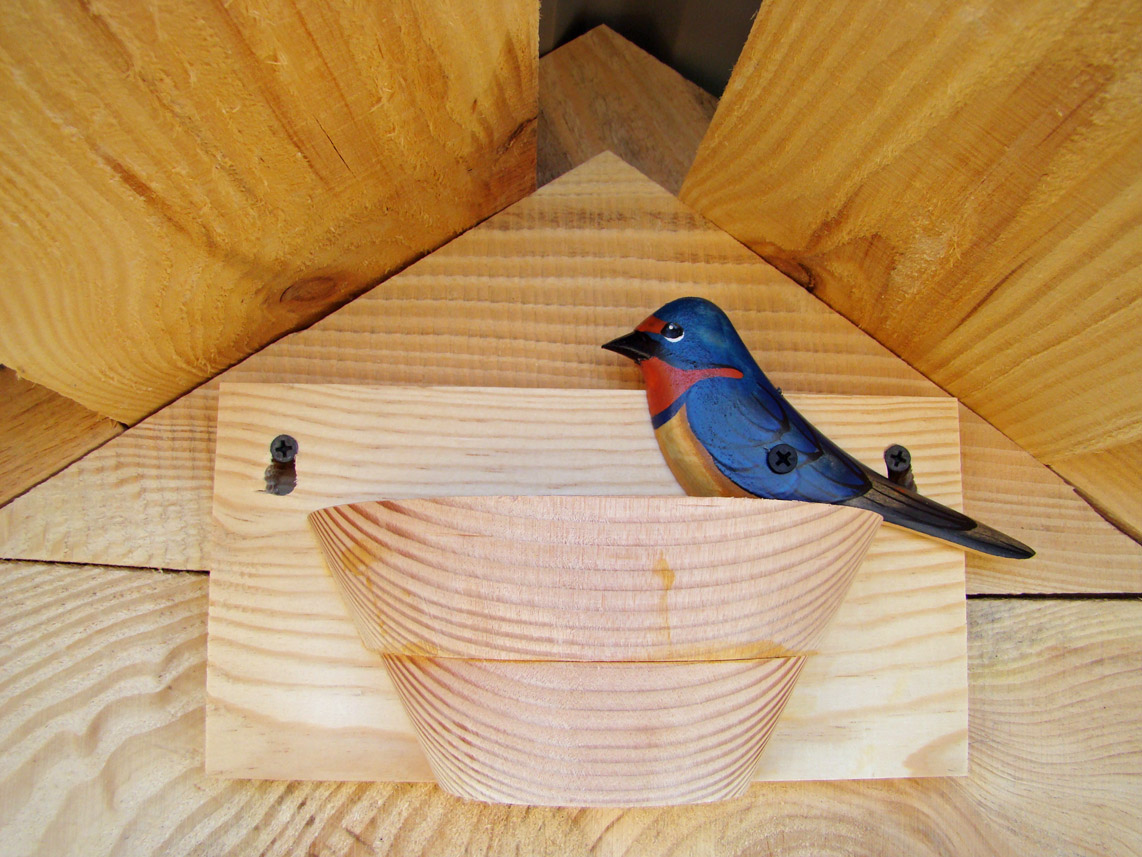
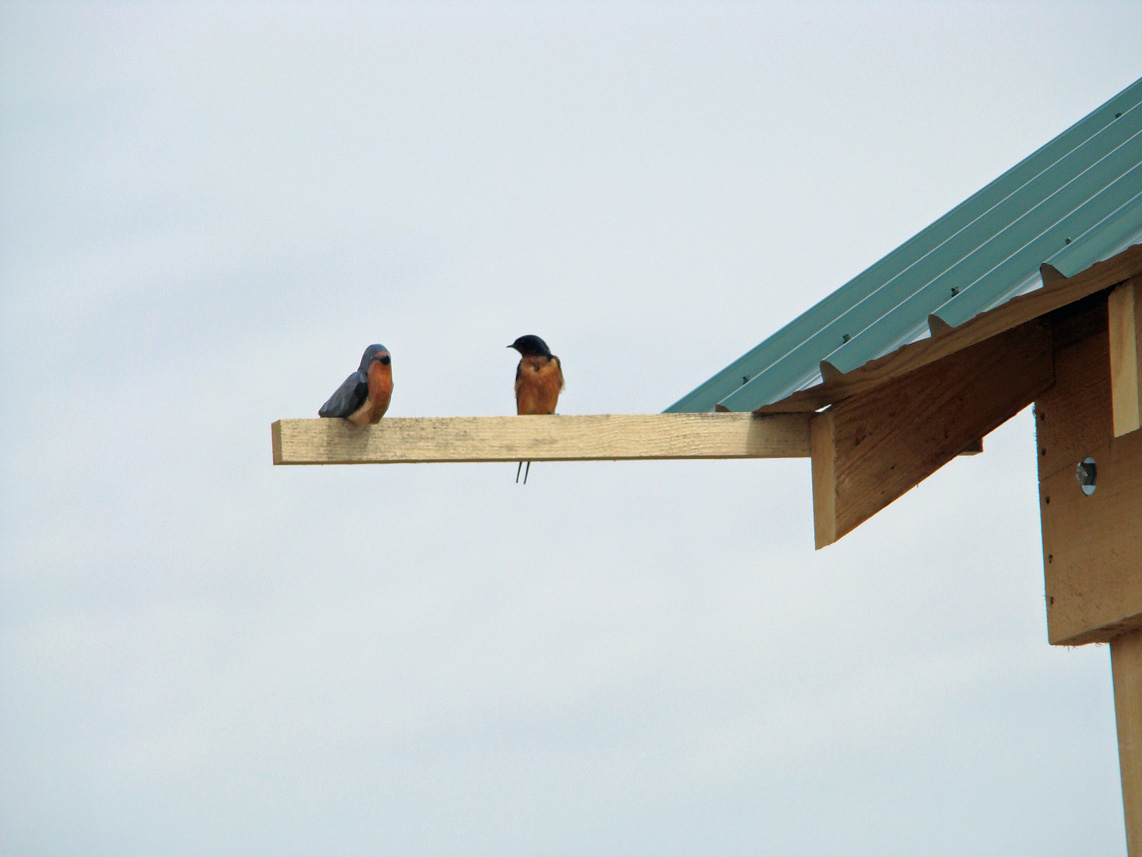
A Barn Swallow barn
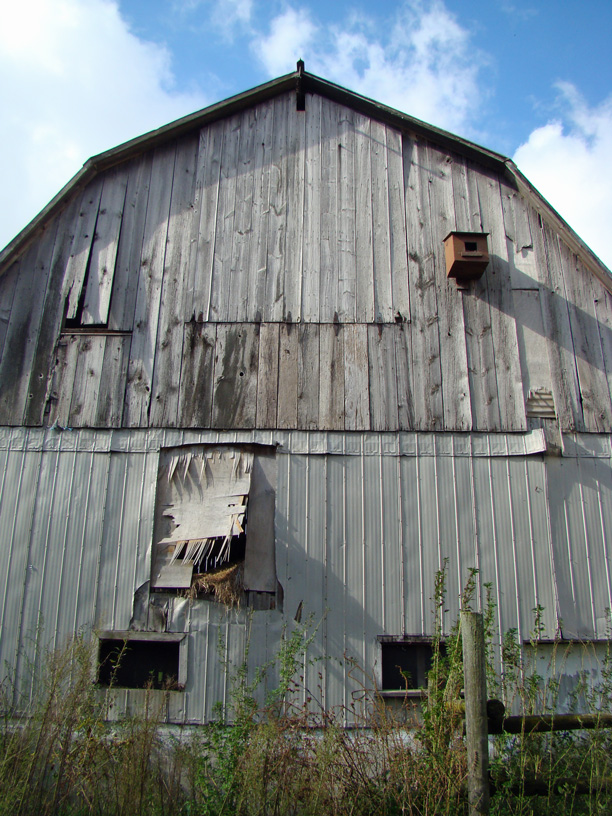
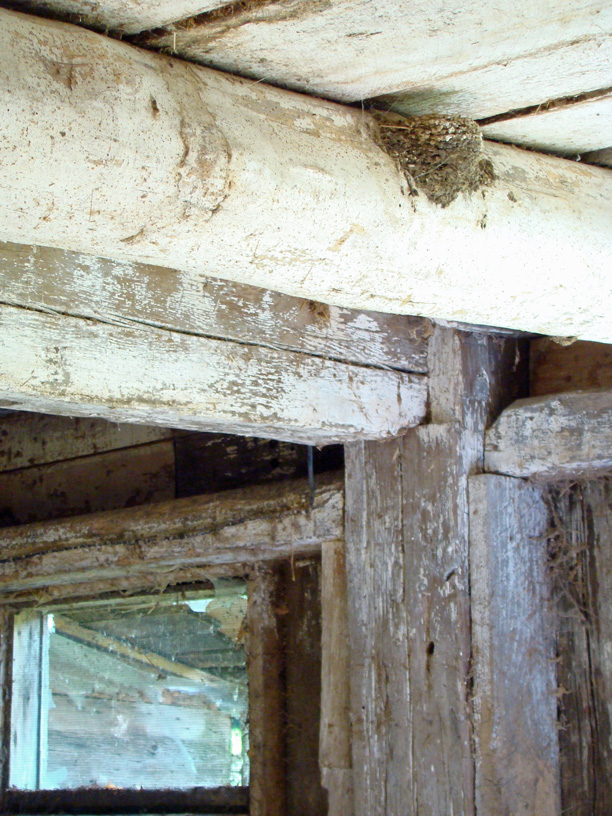
This abandoned barn, located in Norfolk County on property owned by the Nature Conservancy of Canada, was demolished in October 2014 due to safety concerns. Bird Studies Canada built new structures nearby to replace the nesting habitat that was lost. This is one of the properties where the social cues experiment was conducted in 2015.
The picture on the right shows an old Barn Swallow nest.
Publication
Campomizzi, A. J., Z. M. Lebrun-Southcott, and K. Richardson. 2019. Conspecific cues encourage Barn Swallow (Hirundo rustica erythrogaster) prospecting, but not nesting, at new nesting structures. Canadian Field-Naturalist 133:235–245. https://doi.org/10.22621/cfn.v133i3.2233